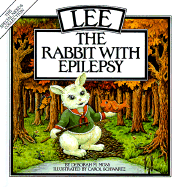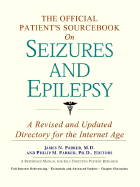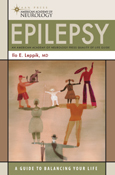|
The Idiot;
By Fyodor Dostoevsky (Author of Crime & Punishment and The Brothers Karamazov)

The novel begins with three strangers in a train en route to Petersburg. A young man named Prince Myshkin is returning
from a Swiss sanatorium where he has been treated for the past few years for some malady similar to epilepsy. He meets a roguish
young man named Rogozhin, who has an unhealthy obsession with a beautiful young woman named Nastasya Filippovna, and a nosy
government official named Lebedyev, who figures prominently throughout the novel.
Upon arriving in Petersburg, Myshkin
acquaints himself with many of the citizens and eventually meets, and is infatuated by, Nastasya. She is pushy, fickle, and
impetuous, and bounces from fiance to fiance like a fortune hunter. Her irresistibility and psychological stronghold on the
men in her life leads to her downfall.
The basis of the novel is that Myshkin is not bright, has not had much education,
and traverses society with a mentality of simplistic innocence. When speaking his opinion, he struggles to articulate himself
with Charlie Brown-like stammering and wishy-washiness. For this reason, people consider him an idiot, but he is a good, honest,
sympathetic, and gracious person. When he comes into a large inheritance, he is blackmailed by a man who claims to be the
illegitimate son of Myshkin's benefactor; but when the man's story is debunked, Myshkin befriends rather than chastises the
culprit and his accomplices. Myshkin also falls in love with and becomes betrothed to a giddy girl named Aglaia, who uses
his ingenuousness as a foil for her jokes and sarcasm, despite his undying devotion to her.
The novel seems to say
that a saintly man, making his way in a society that is concerned with materialism and cutthroat avarice, will be considered
a childish idiot for valuing honesty, kindness, and the simple things in life. The ending is a shocker and sends a plaintive
message, that in a crazy world, a sanatorium is the only place for a saint.

Neurology
for the Non-Neurologist
The thoroughly updated Fifth Edition of this popular book provides a practical
introduction to contemporary neurology for nonspecialists. Each chapter includes case studies with multiple-choice questions,
plus a bulleted list indicating when to consult a neurologist.
This edition features increased emphasis on
treatment, including drugs, devices, and rehabilitation. The authors provide complete information on all new neurologic drugs—including
dosage and interactions—and discuss herbal and alternative medicines where appropriate. This edition also includes more
tables and illustrations to speed clinicians’ access to information.

epilepsy: a new approach: by Adrienne Richard
& Joel Reiter, M.D.
This landmark
publication allows one to look at epilepsy as a challenge instead of a tragedy. Using its philosophy, the techniques
outlined in it can help one to change from a victim to someone who has taken control of his or her life. One can learn
to observe one's self inside and out and can change the patterns which trigger seizures. After all, as the book points out,
"the disorder that causes epilepsy is there all the time, but the seizures are not". This approach treats the whole person,
not merely the symptoms of this malady and the book is written simply although the message is profound.

Throughout millennia, seizures have been
viewed with a mixture of fear and loathing, and those who have them have been vilified. Proposed causes of epilepsy have included
devil possession, chronic masturbation, and mental illness, and treatments have varied according to prevailing sentiments.
Such strategies
have involved trepanning (the drilling of holes in the skull to release demons) during the Stone Age and castration and bleedings
by leeches in the 1800s. In the early and middle parts of the twentieth century, the surgical obliteration or gross removal
of various neuroanatomical structures was done with great frequency and little scientific justification. Today, surgical and
drug treatments are used.
Restrictions have
been placed on jobs epileptics can hold and on tasks they can do. Until recently, drivers' and marriage licenses were withheld.
LaPlante nicely
charts the course of the de-stigmatization of epilepsy, and humanizes some of the major players who have contributed to current
conceptions of seizure activity, as well as to the relationship between consciousness and brain function in general.
She manages to
interweave both historical and contemporary figures, from John Hughlings Jackson to Michael Gazzaniga, and in addition to
readable discussions of their contributions to neuroscience, provides a brief overview of the workings and divisions of the
brain.
LaPlante focuses
on temporal lobe epilepsy (TLE) in order to demonstrate the relationship between the mind and the brain. Although most laypersons
have encountered media portrayals of grand mal seizures characterized by convulsions and unconsciousness, few are familiar
with the characteristics of TLE, or complex partial seizures.
TLE can include
gastric distress, hallucinations, uncontrolled and extreme moods, dreamy states, memory disturbances, and complex involuntary
movements ranging from lip smacking to undressing in public.
Even fewer individuals
outside the medical profession are aware of the controversy surrounding the possible interictal personality changes associated
with TLE. The features of such personality alterations, when examined, have been suggested to include hyperreligiosity, hypergraphia,
altered sexuality, altered mood (particularly an increase in aggression), and hypersociability.
LaPlante explicitly
acknowledges that research demonstrating an unequivocal link between TLE and personality characteristics could result in the
re-stigmatization of epileptics, and she balances her presentation of arguments in support of such personality changes with
examples of extremely talented individuals who may have suffered from TLE.
In addition, were it not
for LaPlante's inclusion and descriptions of ordinary people with TLE, one might be left with the impression that only those
with TLE could make distinguished works of art or profound religious contributions.
Although LaPlante's
description of the physiological cause of epilepsy is vague, (she repeatedly states that individuals with TLE have a brain
scar), what is lacking in neuroanatomical precision is made up for in the description of historical factors mediating the
diagnosis and treatment of epilepsy. She uses examples of lives that have been disrupted or enhanced by TLE.
Ruth Propper, Ph.D. is an
Assistant Professor, with a specialization in cognitive neuroscience, in the Department of Psychology at Merrimack College.

Thoroughly updated for its Third Edition, this best-selling
pocket reference is a practical point-of-care guide to the diagnosis and management of epilepsy. In an easy-to-use outline
format, the book provides complete, clinically focused information on seizure classification, epilepsies with different ages
of onset, situation-related epilepsy, diagnosis and differential diagnosis, and all available drug treatments, including dosages,
side effects, and drug interactions. Close attention is also given to special problems arising in the management of elderly
patients, women, and children with seizure disorders.
This edition includes a revised classification of epilepsy syndromes,
several newly identified syndromes, and new clinical guidelines from the American Academy of Neurology and the American Epilepsy
Society. The authors provide complete information on new antiepileptic drugs such as levetiracetam and new formulations, indications,
and dosing schedules for older drugs. Also included are timely discussions on the neuropsychological effects of seizures and
antiepileptic drugs and the long-term efficacy of vagal nerve stimulation.

The Brainstorm Series (Steve Schacter, MD, Lippincott Williams & Wilkins, New York)
Steven C. Schachter, MD, is professor
of neurology at Harvard Medical School and director of research of the Department of Neurology at Beth Israel Deaconess Medical
Center in Boston, Massachusetts. He is the treasurer of the American Epilepsy Society and serves on the board of directors
and professional advisory board of the Epilepsy Foundation. He is the founding editor of Epilepsy and Behavior and
a coauthor and editor of over 130 reviewed publications and a number of books, including the 6-volume Brainstorm Series.
Brainstorms: Epilepsy in Our Words
Patients describe
their experiences with seizures.
The Brainstorms Companion:
Epilepsy in Our View
Family members, friends and coworkers of people with epilepsy describe their observations
& feelings.
The Brainstorms Family:
Epilepsy on Our Terms
Reveals the terror, uncertainty and frustration felt by children
and parents after an initial seizure and documents the ongoing trials, tribulations and triumphs.
The Brainstorms Healer: Epilepsy and Our Experiences
Reveals the wide range of emotions experienced by those who work with epilepsy patients and their families.
The Brainstorms Woman: Epilepsy in Our Lives
The stories of women living with epilepsy as told in their own words.

Lee the Rabbit With Epilepsy is a source of hope and reassurance aimed at children 4-8 years of
age. It is a story about a rabbit whose first seizure is while fishing with grandpa. Lee learnes that through proper medication she
can lead a normal life.

Taking Seizure Disorders to School: A Story About Epilepsy takes an entertaining approach to
showing children beginning school that they can overcome the fears and errant beliefs regarding epilepsy.

This sourcebook has been created for patients who have decided to make education and
Internet-based research an integral part of the treatment process. Although it gives information useful to doctors, caregivers
and other health professionals, it also tells patients where and how to look for information covering virtually all topics
related to seizures and epilepsy, from the essentials to the most advanced areas of research.

Our Predisposition
To Seizures
“Given certain conditions,
absolutely anybody can experience a seizure. Why, then, do some people experience seizures frequently and other people not
at all? The answer to this question lies in the complex interrelationship between genetics (or heredity) and acquired factors.
It
appears that we inherit our family’s seizure threshold. We may inherit a
predisposition toward epilepsy, but whether or not we develop seizures may depend on what triggers events – such as
brain trauma or infection – we later encounter.”
Epilepsy and Seizures;
Everything You Need To Know
© 2001 by Donald F. Weaver who is Professor of Neurology and Professor of Chemistry
at Queen's University, in Kingston, Ontario, and is director of the university's Epilepsy Clinic. He has received the International
Gower's Award from the British League against Epilepsy, the S. Weir Mitchell Award from the American Academy of Neurology
and numerous other awards.

Epilepsy: A Guide to Balancing Your Life
Filled
with helpful tables and illustrations, this book answers commonly asked questions about epilepsy, and how it's diagnosed
and treated.The author of the book is Ilo Leppik, M.D., Director of Research
at MINCEP Epilepsy Care Center in Minneapolis.
Let the folks at Epilepsy.com provide you with a weath of information
through their numerous selection of multimedia broadcasts.
Neurology, the official journal of the American
Academy of Neurology publishes clinical and research articles and reviews about Neurology & neuroscience topics such
as epilepsy. Search by Article topic or authors name to find journal publications on a wealth of neuro topics.
CLICK ON THE LOGO TO THE RIGHT TO FIND OUT MORE.
Click on the word NEUROLOGY for articles specific to epilepsy adn seizures.

|
| More Books About Epilepsy |
|

